Paper Outline
-
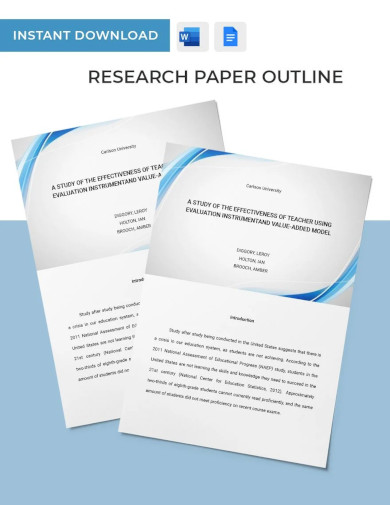
Research Paper Outline
download now -
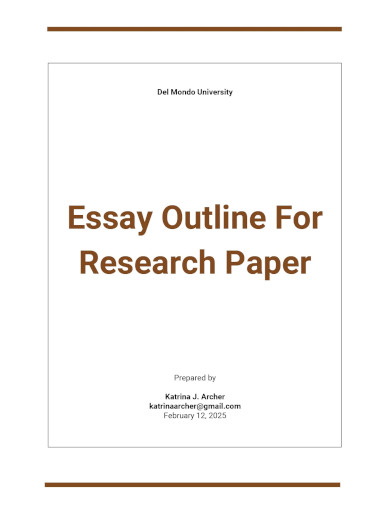
Essay Outline For Research Paper
download now -
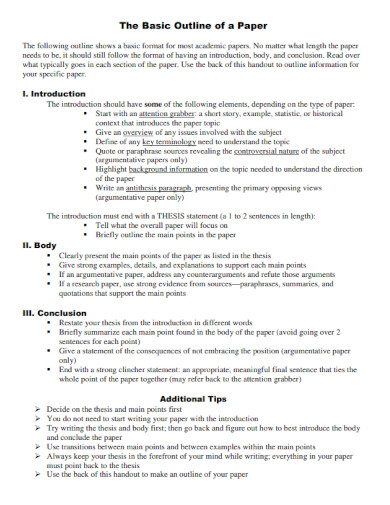
Basic Outline of a Paper
download now -
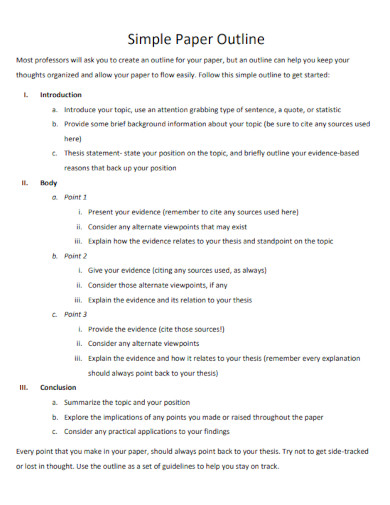
Simple Paper Outline
download now -
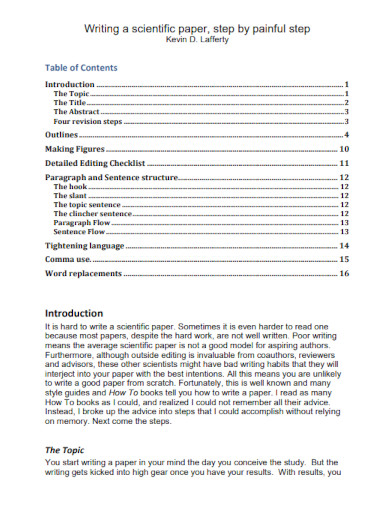
Scientific Paper Outline
download now -
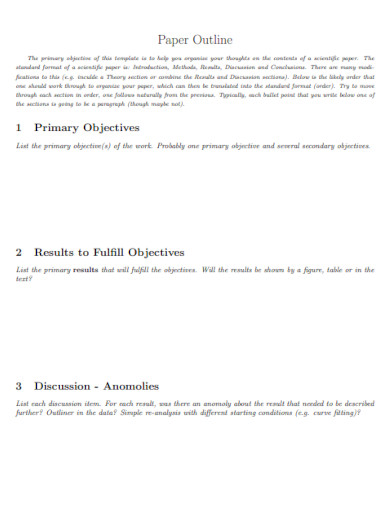
Paper Outline
download now -
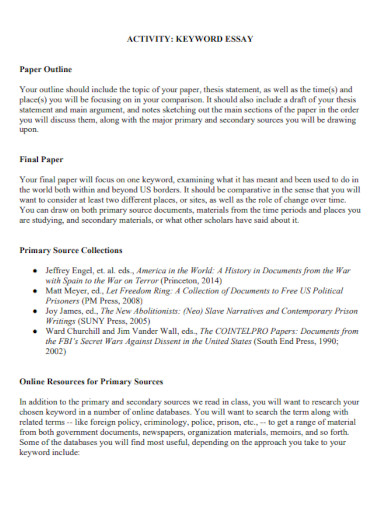
Essay Paper Outline
download now -
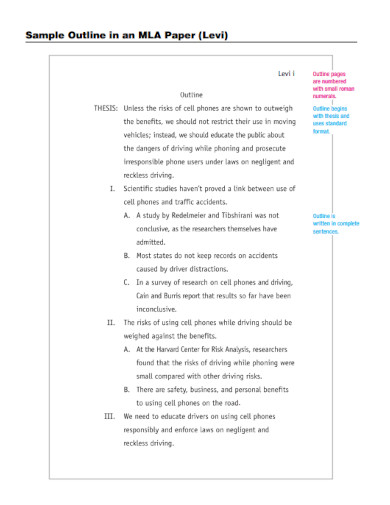
MLA Paper Outline
download now -
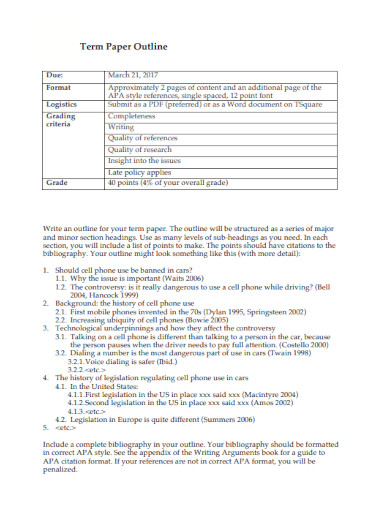
Term Paper Outline
download now -
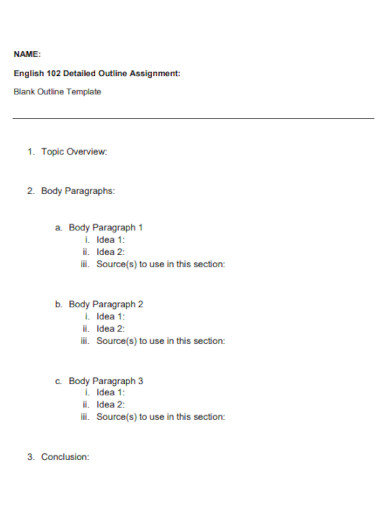
Detailed Paper Outline Assignment
download now -
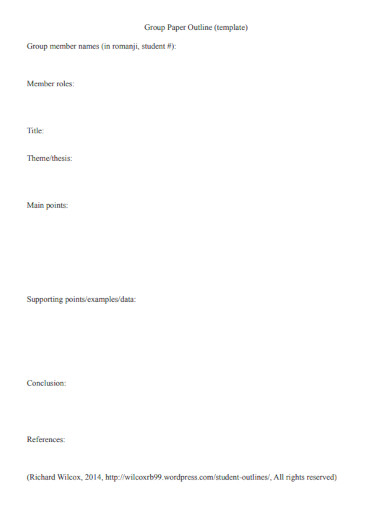
Group Paper Outline
download now -
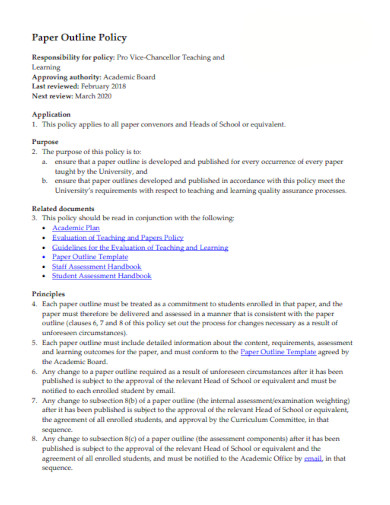
Paper Outline Policy
download now -
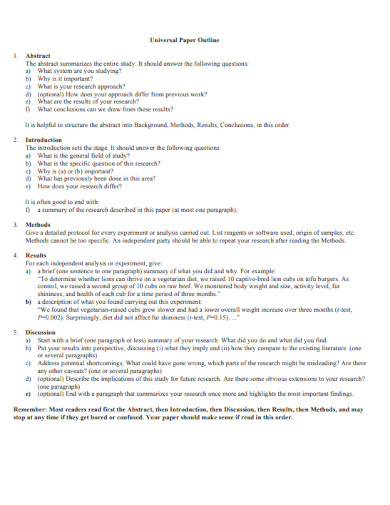
Universal Paper Outline
download now -
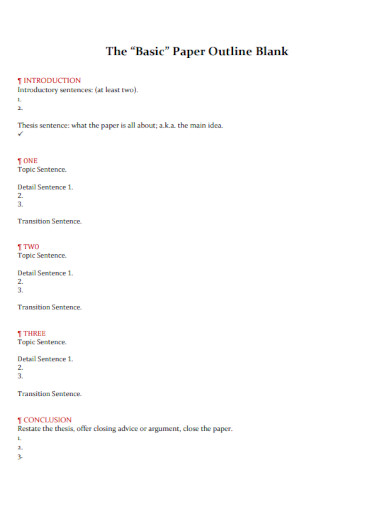
Basic Paper Outline
download now -
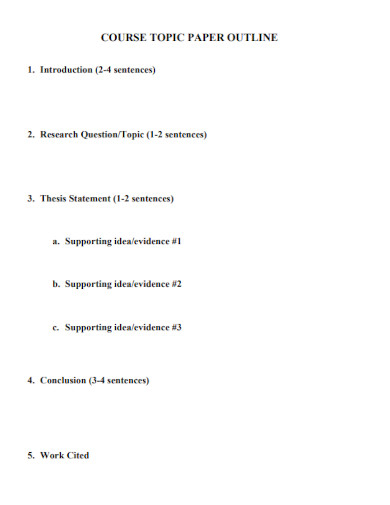
Course Topic Paper Outline
download now -
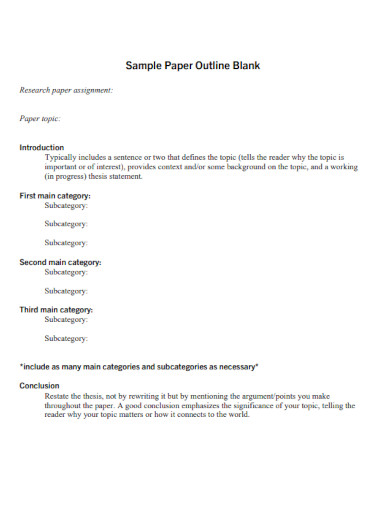
Sample Blank Paper Outline
download now -
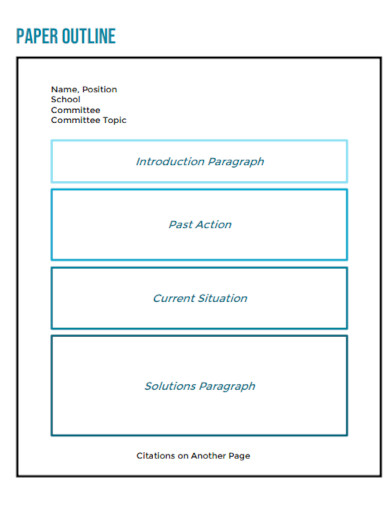
School Paper Outline
download now -
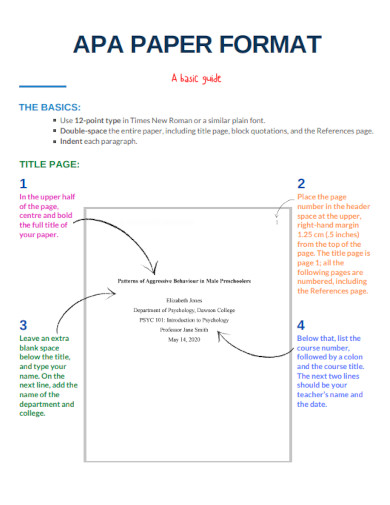
APA Paper Outline Format
download now -
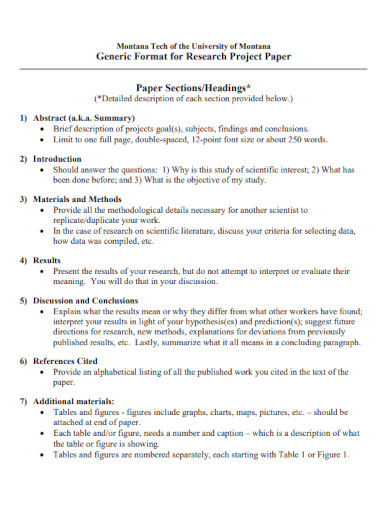
Project Paper Outline
download now -
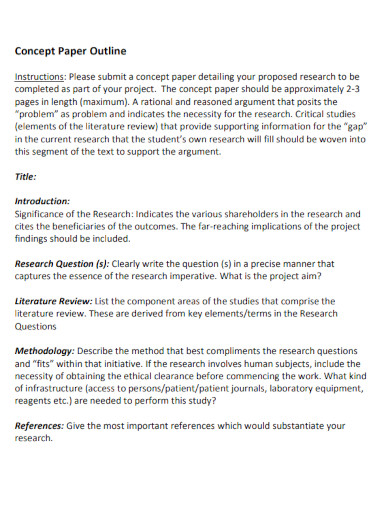
Concept Paper Outline
download now -
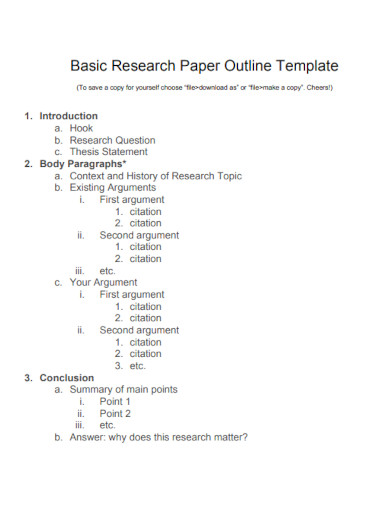
Basic Research Paper Outline
download now -
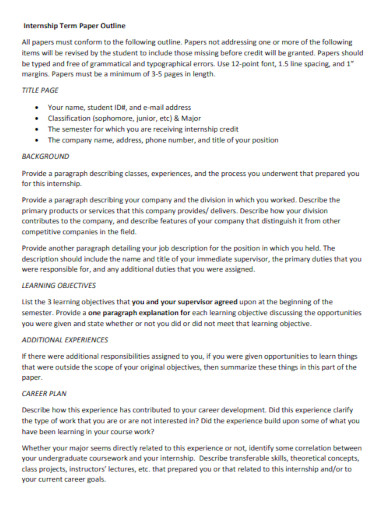
Internship Term Paper Outline
download now -
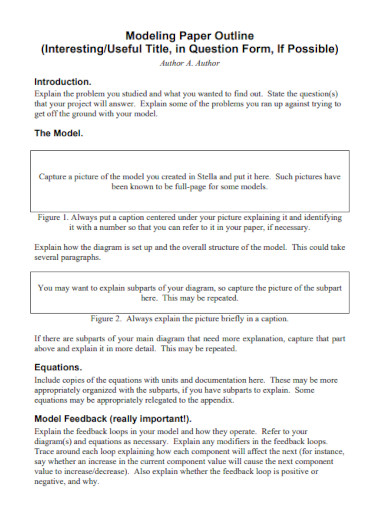
Modeling Paper Outline
download now -
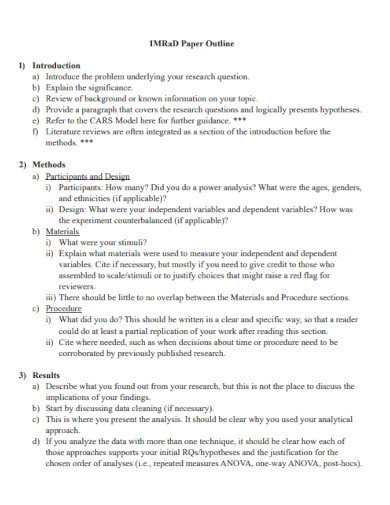
Paper Outline For University
download now -
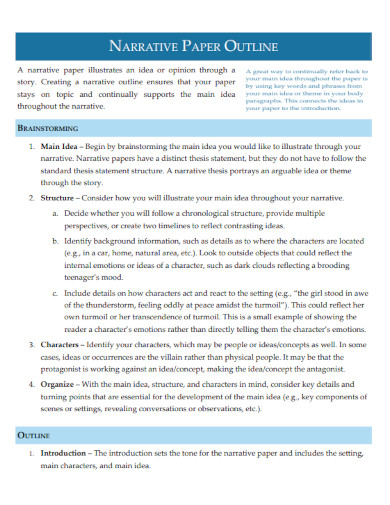
Narrative Paper Outline
download now
FREE Paper Outline s to Download
Paper Outline
What is Paper Outline?
Types of Paper Outlines
How to Create a Paper Outline
FAQs
What are the differences between APA and MLA formats when it comes to creating a paper outline in PDF format?
How can an effective outline improve the organization and coherence of a college essay or research paper?
What are the recommended strategies for creating a comprehensive outline for a college essay or research paper?
What are the main differences between a paper outline for a literature review and a case study analysis?
How can using a PDF format for a paper outline ensure compatibility and ease of access for readers?
What is Paper Outline?
A paper outline serves as a crucial organizational tool in college-level academic writing. It is a structured framework that provides a roadmap for the development of a research project, essay, case study analysis, summary report, literature review, or thesis. The outline helps writers effectively plan, structure, and present their ideas in a logical and coherent manner. It ensures that key points are covered, supporting evidence is incorporated, and a consistent writing style is maintained, adhering to specific formatting guidelines such as APA paper or MLA. It outlines the main sections and subsections, provides a hierarchy of ideas, and ensures that the topic or project is explored systematically. By utilizing a paper outline, writers can streamline their writing process, maintain focus, and present their scholarly work in a clear and organized manner.
Using paper outlines offers significant benefits to researchers, students, and writers across diverse fields and industries. Firstly, outlines provide a structured framework, ensuring clarity and coherence in written work. According to a survey conducted by the University of Wisconsin-Madison, 85% of researchers reported that using outlines improved the overall organization of their papers. Secondly, outlines enhance productivity and time management. The same survey revealed that 72% of students felt that outlines helped them complete their assignments more efficiently. Thirdly, outlines foster critical thinking and logical reasoning, enabling writers to develop well-constructed arguments and analyses. A study published in the Journal of Writing Research found that writers who used outlines demonstrated significantly higher levels of organization and coherence compared to those who did not. Overall, paper outlines are indispensable tools for effective writing, improving the quality and impact of research and written communication.
Types of Paper Outlines
In this section, we explore a range of paper outline types that serve as valuable tools for effective organization and structure. From traditional hierarchical outlines to specialized formats like comparative and conceptual outlines, discover the diverse options available to enhance your writing process and presentation.
How to Create a Paper Outline
Follow this step-by-step guide so that you can create a well-structured paper outline for college essays, research papers, case study analyses, literature reviews, thesis papers, and other academic writings.
Step 1: Understand the Assignment and Gather the Materials
Carefully read the assignment guidelines and understand the requirements. Collect all relevant research materials, including sources, notes, and any additional resources necessary for the writing task. This step ensures that you have a clear understanding of the scope, topic, and purpose of your paper.
Step 2: Identify Main Sections and Subtopics
Break down your paper into main sections based on the assignment prompt and the logical flow of your content. For example, if you’re writing a research paper, identify sections such as Introduction, Methods, Results, and Conclusion. Within each section, determine the subtopics or key points you want to cover, ensuring they align with your thesis statement or research objectives.
Step 3: Organize and Prioritize Ideas
Arrange your main sections and subtopics in a logical order that best supports your argument or analysis. Consider using a traditional hierarchical structure, starting with Roman numerals for main sections and using letters or numbers for subtopics. Prioritize your ideas based on their importance and relevance to your thesis or research question.
Step 4: Add Supporting Details and Evidence
Under each subtopic, outline the specific supporting details, evidence, or examples that you plan to include in your paper. These details may consist of quotations, data, case studies, or theoretical concepts. Include enough information in your outline to guide your writing process, but avoid excessive detail that may hinder flexibility during the actual drafting stage.
Step 5: Review and Refine Your Paper Outline
Step back for a moment and critically review your outline. Ensure that it reflects a logical and coherent structure and that the main points align with your thesis or research objectives. Look for any gaps in your argument or missing sections that need to be addressed. Make necessary revisions, reorganize sections if needed, and ensure that your outline provides a clear roadmap for your writing process.
FAQs
When creating a paper outline in PDF format, it is important to consider the specific formatting requirements of the chosen citation style, such as APA (American Psychological Association) or MLA (Modern Language Association). While both styles require a similar structure with headings and subheadings, there are some differences in terms of formatting. For example, APA format typically uses Roman numerals for main headings, while MLA format uses Arabic numerals. Additionally, APA format may require the inclusion of an abstract, while MLA format does not.
An effective outline plays a crucial role in improving the organization and coherence of a paper. By clearly outlining the main points and supporting evidence, the outline helps to ensure that the content is well-structured and flows smoothly. It allows the writer to see the overall structure of the paper and make necessary adjustments to ensure a logical progression of ideas. Additionally, a well-organized outline helps readers follow the argument and understand the main points being presented.
Creating a comprehensive outline for a college essay or research paper involves several strategies. First, it is important to clearly define the main topic or research question that the paper will address. Next, identify the main points or arguments that will be discussed in the paper. These will serve as the main sections or headings of the outline. Then, gather and organize the supporting evidence for each main point or argument. Finally, arrange the main points and supporting evidence in a logical and coherent manner, ensuring that each section flows smoothly into the next.
While both a literature review and a case study analysis require an outline, there are some differences in terms of their structure and focus. A literature review outline typically includes sections for the introduction, methodology, findings, discussion, and conclusion. The focus is on summarizing and analyzing existing literature on a specific topic. On the other hand, a case study analysis outline may include sections for the introduction, background information, analysis, recommendations, and conclusion. The focus is on analyzing a specific case or problem and providing recommendations based on the analysis.
Using PDF format for sharing and distributing paper outlines offers several advantages. First, PDF files are widely compatible and can be opened and viewed on various devices and operating systems. This ensures that the outline can be easily accessed by anyone, regardless of their device or software. Additionally, PDF files preserve the formatting and layout of the document, ensuring that the outline appears exactly as intended. PDF files also have a smaller file size compared to other formats, making them easier to share and download.
What are the differences between APA and MLA formats when it comes to creating a paper outline in PDF format?
How can an effective outline improve the organization and coherence of a college essay or research paper?
What are the recommended strategies for creating a comprehensive outline for a college essay or research paper?
What are the main differences between a paper outline for a literature review and a case study analysis?
How can using a PDF format for a paper outline ensure compatibility and ease of access for readers?
Creating an SEO-friendly paper outline in PDF format is crucial for enhancing visibility and accessibility. By incorporating relevant keywords, using clear headings and subheadings, and structuring the outline logically, researchers can improve the readability and search engine optimization of their documents. Additionally, following specific citation style guidelines and utilizing SEO techniques can further enhance the professionalism and credibility of the outline. Overall, a well-structured and properly formatted outline in PDF format is essential for effectively conveying main points and arguments while maximizing visibility online. Easily and quickly download and use our sample paper outline format in PDF and other blank sample templates such as graph paper PDF, and research paper samples.
